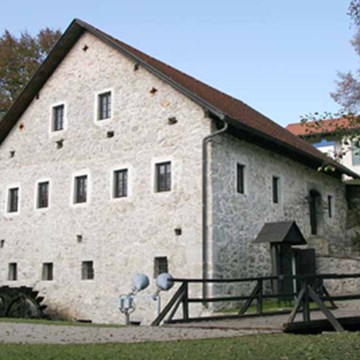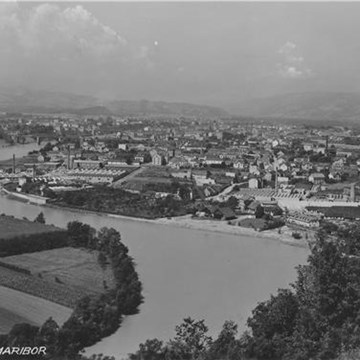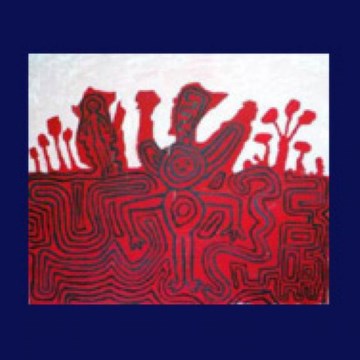MAC USP IN THE 21st CENTURY: THE ERA OF ARTISTS
Katia Canton
Curator
PART 1
The word "curatorship" comes from the Greek, "curare," which means to take care of. In this exhibition, caring can be translated into the way it celebrates the diversity of contemporary artists' work, opening itself to multiple readings that encompass encounters, frictions, mirroring and contrasting, which in turn are shaped by the movements and relations established between works and visitors. In the present case, particularly, visitors are not invited to get acquainted with a specific proposal or curatorial framework, but rather to articulate their own life experiences, knowledge and unique interactions with the works displayed in the gallery spaces.
Considering the history of any profession, curatorship might be seen as quite recent. It was only in the XVIII century that a curator was professionally defined as the person who manages or oversees any given collection.
Since that time, the curator's work has been defined in time by all the activities driven by the collection itself, its preservation and conservation, cataloging and researching the works that are part of that collection, the acquisition of new works and ultimately the exhibition of that collection.
Even though the curator's role was generally understood as something more strictly related to the care of a collection, curatorship has acquired a wider and more pointed meaning, linked to the building of specific thoughts or the creation of a given sense that mirror the complexities of artistic creation and of life itself.
Contemporarily, especially as of the last two decades of the XX century, curators have been gaining importance within the art system. So much so that the era of curators is believed to have started then. With their seal, curators assign credibility to the artist's work, placing it in the art system. Through their philosophic, anthropologic, environmental, feminist or other readings and discourses within an interdisciplinary universe, curators introduce a perspective that often escapes the boundaries of aesthetics and art history alone. In that context, sometimes the work of art tends to operate as words taken from the curator's sentences, or even as contents that support a framework previously constructed. Even though such readings may offer powerful and rich interpretations, they are hardly capable of exhausting the innumerous interpretive possibilities the work of art intrinsically presents.
In this sense, the current exhibition chose to adopt the subtitle The Era of Artists as an alternative outlook. Here there will be no a priori theoretical parti pris or curatorial interpretation.
PART 2
First of all, we deemed it important for a long term museum collection exhibition to avoid fixed readings (1). We indeed had thought of many approaches to display this cutout of the MAC USP collection that encompasses works acquired after the year 2000, with the help of several supports, but mostly donated by the artists themselves. The idea behind organizing the space following the order of the artist's last name was to minimize connections with any pre-established sense or anterior theoretical or thematic framework so that each work would gain its full conceptual mobility. The notion was that readings should be allowed to fly freely, travel and land on given moments and then take flight again.
Listing of names replaced the chronological criterion, which could also have been a possibility. The final decision considered that contemporary production flow does not conform to any horizontal temporality, nor to a historical notion chronologically organized. In the temporal sense, a contemporary moment is a biased time experience (2). Or as North American art critic and philosopher Arthur Danto said, "we live the end of art as a linear story when it frees itself from the arrows of time and assumes a post-historical time (3)."
The choice for this kind of systematization was also driven by the research and curatorial work performed at MAC USP since the mid 90's, named Contemporary Trends. We contend that consistent research should be the vocation of all University museums. The starting point for Contemporary Trends was a mapping of contemporary Brazilian production, which laid the groundwork for an understanding of art in the XXI century (4).
By 1997, MAC USP concerns about creating a living dialogue between art museums as an institution and the systematic updating of museums vis-à-vis contemporary production generated books, catalogs, videos, journeys and led to a series of exhibitions titled Contemporary Legacy. By researching and working with artists to enroll names as references, as well as to sort the works and choose the best display at the exhibition space, this project aimed to understand better the conceptual and aesthetical references of the generation coming after 1990. In other words, by substituting the concept of an exhibition shaped by the curator's view, Contemporary Legacy embodied a curatorial project organized along with artists, starting from what they pointed out to be the references and influences that inspired their work and poetics. The role of curatorship then was to organize the multiple paths that were drawn and to reflect on the choices made by the artists.
The current exhibition incorporates this attitude of working together, proposing an almost invisible curatorship while the focus remains on the artists' work. No readings or conceptual movement paths were previously defined. Works are open to free exploration and to the individual experience of visitors, who are free to find their own connections, identity and alterity relations among the array of possible conversations that can be held.
We are talking of a curatorship role that is purposely willing to let all underlying meanings intrinsic to the work of art emerge and play with one another in dynamic and incessant processes. Connections are threads that will never stop moving.
Notes:
1. It is worth explaining that the exhibition MAC USP in the 21st Century: the Era of Artists is intended to remain open for at least 5 years, so that the public may come and go, view and review the works that most interest each visitor. The smaller room will provide some mobility in the sense that some works can be replaced or new ones incorporated.
2. The concept is explained in Narrativas Enviesadas (Biased Narratives), from the collection Temas da Arte Contemporânea (São Paulo: WMF Martins Fontes, 2011).
3. Arthur Danto. Após o Fim da Arte: arte contemporânea e os limites da história (After the end of Art: contemporary art and the boundaries of history). (São Paulo: EDUSP, 2006).
4. A discussion about research in Tendências Contemporâneas (Contemporary Trends) and the series of Heranças Contemporâneas (Contemporary Heritage) exhibitions in the book Novíssima Arte Brasileira: um guia de tendências (São Paulo, Iluminuras, 2000).
Exhibitions and events

Collection Storage in Works
Permanent exhibitionSince 2012, the Museum of Contemporary Art of the University of São Paulo, founded in April 1963, is under process of occupation of its new venue at Ibirapuera Park. This building was renovated to...

The Institution of the Modern
Permanent exhibitionThe Museum of Contemporary Art of the University of São Paulo has about 12,000 artworks in its collection. This important heritage allows us to present innumerable visions of the art regarding the...

VISIONS OF ART IN THE COLLECTION OF MAC USP 1900-2000
Permanent exhibitionThe exhibition [Vision of Art in the Collection of MAC USP 1900-2000] presents the art of the 20th century through the collection gathered by this museum. It is divided into two segments distributed...
Activities from this museum
We don't have anything to show you here.











